Introduction:
Road patterns are very important to the growth of a city’s neighborhoods. On the other hand, recent city growth has yet to pay much attention to studying road patterns. It has led to many roads that don’t connect, as well as housing and business developments built far away from roads far from the center of town.
As the distance between where people live and where most of the businesses are in a city grows, more and more people need cars to do their daily travel chores. The way the roads are set up also makes it take longer for emergency vehicles to get to a certain place. There are different kinds of road patterns used on highways. A road pattern is when a road is built in a rectangular pattern, radial Pattern, hexagonal Pattern, etc., to help manage traffic.
What is Road Pattern?
A road pattern is a format for constructing road networks that link different locations. When designing a city, planners take into account a variety of road patterns. Development of the road system begins once the optimal road pattern has been chosen. The primary goal of road patterns is to improve accessibility by linking major thoroughfares and other key locations within a community.
When it comes to connecting roads and locations, every city and country has its unique road network pattern. Road patterns are chosen for a city based on the city’s plan. The primary goal of the road layout was to shorten the total travel time and minimize the number of turns drivers would have to make. Controlling traffic in an area depends on the layout of its roads.
Types of Road Patterns:
1. Radial Pattern:
The radial road pattern is a street layout in which roads spread out from a central point like the spokes on a wheel. It is a common way to plan a city or central square in the middle and roads going to other parts of the city. The radial road pattern makes transportation efficient and makes it easy to get to the center, but it can also cause traffic jams and make it hard to get to places that aren’t directly connected to the center. The radial pattern is divided into three categories:
i) Radial or Star and Block Pattern:
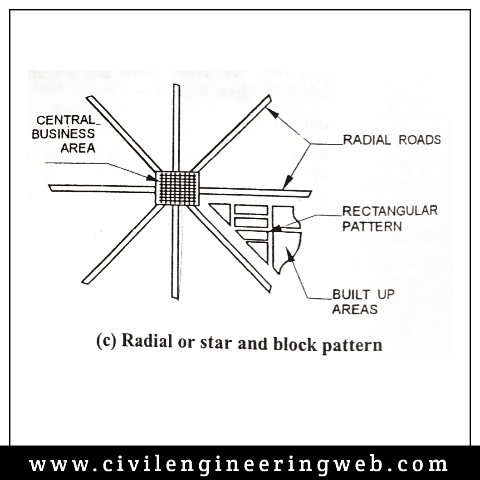
Fig1: Radial or Star and Block Pattern
Courtesy: civilengineeringweb.com
The Radial or Star pattern, also known as the Block pattern, is a street layout design in urban planning where roads radiate out from a central point, like the spokes on a wheel. The central point is often a central business district or a central square, and the roads lead to other city areas. The blocks that the roads divide into form a regular pattern and are typically used for residential, commercial, or industrial purposes.
This design allows for efficient transportation and easy access to the central point. Still, it can also result in traffic congestion and limited access to areas that are not directly connected to the central point. Additionally, the regular blocks in the Pattern can make it easy to navigate the city and provide a clear structure for urban development. However, it can also lead to monotonous and repetitive building designs if poorly planned.
ii) Radial or Star & Circular Pattern:
In urban planning, a Radial or Star & Circular pattern is a way to set up streets so that roads radiate from a central point and form a circle around it. This central point is usually a central business district or a central square, and the roads lead to other parts of the city. The circular Pattern helps spread traffic out more evenly, reducing traffic jams and improving traffic flow.
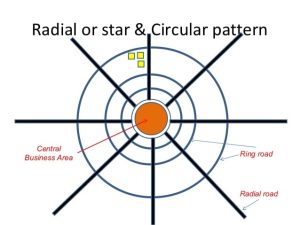
Fig2: Radial or Star and Circular Pattern
Courtesy: dreamcivil.com
In this layout, the central circular road usually has a slower speed limit and leads to the city’s inner areas. On the other hand, the radial roads are usually fast roads leading to the city’s outer areas. This design is often used in cities with a lot of traffic and the need to make sure transportation works well. But the circular Pattern can also make it harder to get to some places quickly and some directly. Also, it can be hard to use in places with limited space or land that has an odd shape.
iii) Radial or Star & Grid Pattern:
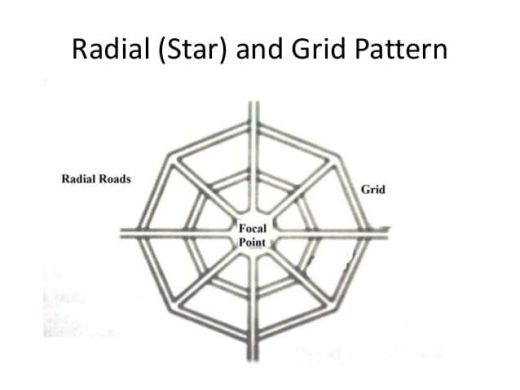
Fig3: Radial or Star and Grid Pattern
Courtesy: civiljungle.com
In urban planning, roads radiate from a central point and form a grid around it in the Radial or Star & Grid pattern. The roads radiate from a central business district or central square. The grid pattern evenly distributes traffic and provides direct routes to destinations, reducing travel times and improving transportation efficiency.
This design uses grid streets to access blocks and radial roads as arterial roads. High-traffic cities use this design to ensure efficient transportation and easy navigation. However, the grid pattern can increase travel distances for destinations at the corners of the grid and congestion in high-traffic areas. If not planned, it can result in repetitive building designs.
2. Rectangular or Block Pattern:
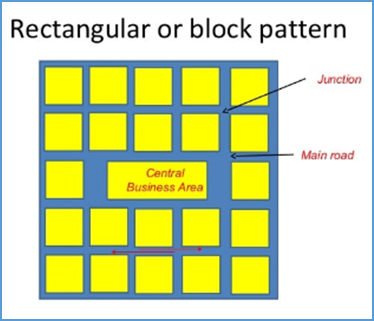
Fig4: Rectangular or Block Pattern
Courtesy: goseeko.com
In urban planning, streets are laid out in a grid-like pattern to form rectangular blocks. Residential, commercial, and industrial blocks are common. This simple, regular design is easy to navigate and develop. This Pattern forms a grid of streets intersecting grid, making travel faster and more direct. Rectangular blocks simplify urban development.
However, the rectangular Pattern can increase travel distances for destinations at block corners and congestion in high-traffic areas. If not planned, it can result in repetitive building designs. Some cities use the broken grid pattern, which adds irregular blocks and diagonal streets to improve traffic flow and make the city look more interesting, to deal with these problems.
3. Hexagonal Road Pattern:
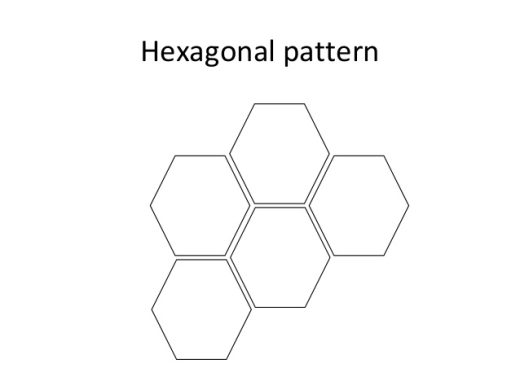
Fig5: Hexagonal Road Pattern
Courtesy: constructionnor.com
The Hexagonal Road Pattern in urban planning arranges streets in hexagonal blocks. The hexagonal shape distributes traffic more evenly and allows for more direct routes, making this design efficient and organic. This Pattern’s hexagonal blocks have multiple access points, making navigation easier and reducing travel time. Hexagonal blocks for buildings and infrastructure allow for more flexible and dynamic urban development.
The hexagonal Pattern is more difficult to implement than other street layout designs and may require more land due to the hexagonal blocks’ larger size. Multiple points of access can also increase traffic in high-traffic areas due to more intersections and bottlenecks.
4. Grid Pattern:
A grid pattern is a repetitive arrangement of lines or shapes forming a two-dimensional network. It is often used in graphic design, web design, and architecture to create structure and balance. In web design, grids help create responsive and flexible layouts, while in graphic design, they align elements and create a cohesive look. Grids can also be used in manufacturing and engineering to ensure accurate placements.
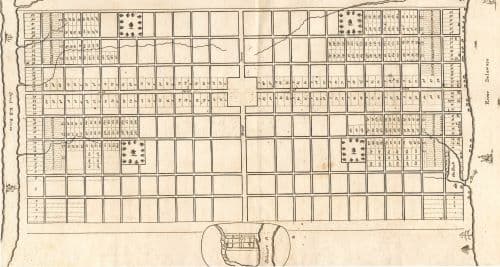
Fig6: Grid Road Pattern
Courtesy: civiljungle.com
5. Linear Pattern:
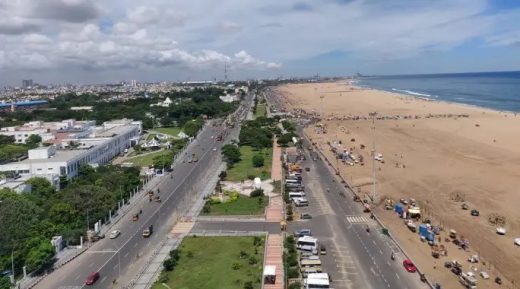
Fig7: Linear Road Pattern
Courtesy: civilscoops.com
A linear road pattern is a term used to describe the arrangement of roads and highways in a straight line or series of lines, with no branching or deviation from the main path. Linear road patterns are often seen in areas with large amounts of land dedicated to transportation and are used to facilitate long-distance travel and transportation of goods. In many cases, linear road patterns can lead to suburban sprawl and urbanization as cities and towns developed along the main roads and highways. They can also lead to increased traffic congestion and air pollution, as more cars and trucks are must long distances to reach their destinations.
6. Minimum Travel Pattern:
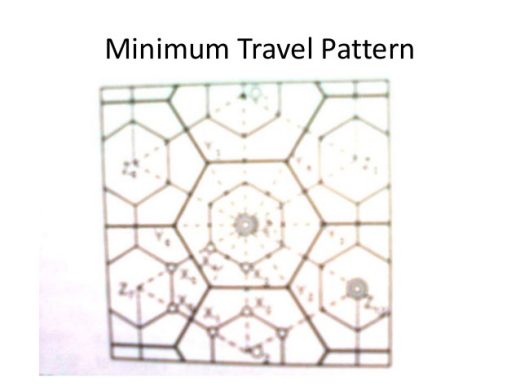
Fig8: Minimum Travel Pattern
Courtesy: medium.com
Minimum travel pattern refers to the shortest, most efficient route or path a person or vehicle takes to reach a destination. This term is commonly used in transportation planning and analysis, where the goal is to minimize the distance traveled or time is taken to reach a destination while considering factors such as traffic, road conditions, and personal preferences. The minimum travel pattern can be determined using various methods, including network analysis, routing algorithms, and optimization techniques. The result is a route that minimizes the distance or time taken, providing a cost-effective and efficient transportation planning and analysis solution.
Conclusion:
Road patterns are important for building up a city’s settlements. Current urban development needs to look at how roads will be built before they are built. Many interconnected roads, housing projects, and commercial developments are built far from town centers.
Because of the growing distances between the city’s residential and business centers, more and more people have to drive to get where they need to go every day. The main goal of creating road patterns is to reduce travel time, pollution, and distance for vehicles. It also emphasizes how the branch roads are linked.
References:
1. GURJAR, ROHIT. “VARIOUS ROAD PATTERNS (1/3).” Medium, 9 Feb. 2018, medium.com/@rohitgurjar009/various-road-patterns-1-3-d47841e1fd33.
2. “Classification of Road Patterns | Student Projects Classification of Road Patterns Classification of Road Patterns.” Student Projects | Microcontroller Projects, Circuit Diagrams, Project Ideas, 26 Sept. 2022, studentprojects.in/civil-engineering/road-patterns.
3. “Classification of Road and Types of Road Pattern | Highway Engineering.” ESE NOTES, 29 Apr. 2021, esenotes.com/classification-of-road-types-of-road-pattern.
4. “Road Patterns, Planning Surveys and Master Plan – Notes | Study Transportation Engineering – Civil Engineering (CE).” EDUREV.IN, 28 Dec. 2017, edurev.in/study tube/Road-Patterns–Planning-Surveys–Master-Plan-Trans/3f7a04f5-a798-4775-b935-c30842b4bdaa_t.
5. Singh, Sanjay. “Different Types of Road Patterns | Road Patterns in India.” Civil Engineering Web, 5 Apr. 2022, www.civilengineeringweb.com/2022/04/types-road-patterns-india.html.
6. “4.road Patterns | PDF | Traffic | Traffic Light.” Scribd, www.scribd.com/document/233593258/4-Road-Patterns. Accessed 9 Feb. 2023.
If you have a query, you can ask a question here.


